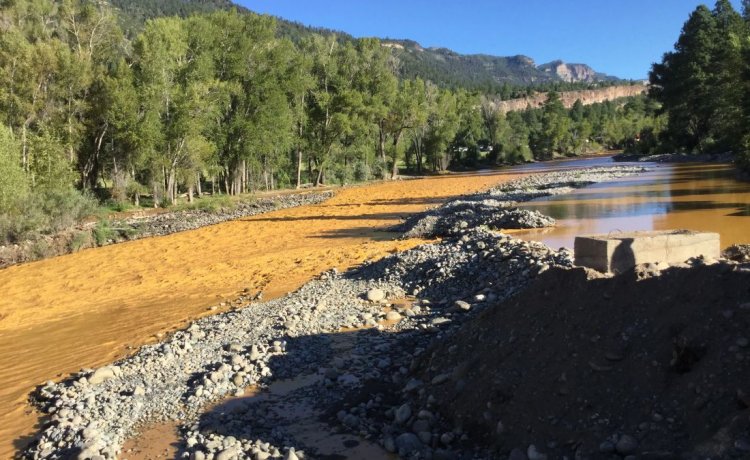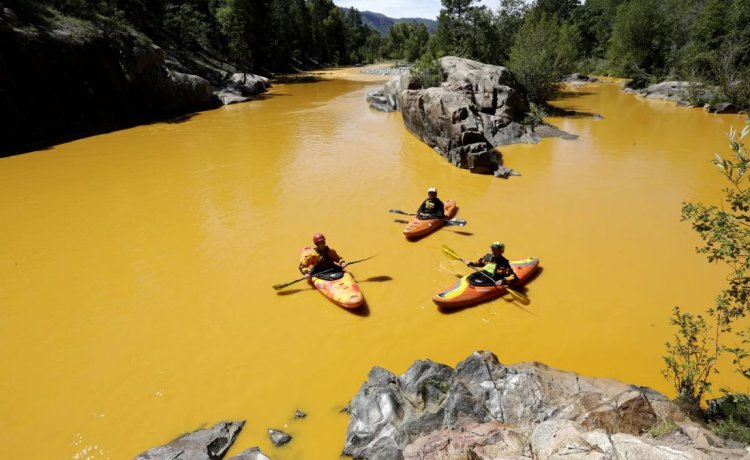Ohio Rivers turned Orange! Toxic pollution is the main reason for this dramatic change!
Ohio Rivers turned Orange! Toxic pollution is the main reason for this dramatic change!
Updated on August 02, 2022 19:09 PM by Andrew Koschiev
Haven of Ohio!

Southeast Ohio is a haven for outdoor lovers with rolling hills, forests, and hiking trails. The landscapes are countless orange-stained streams colored by the iron-oxide pollution from abandoned coal mines.
Contaminated water!

The streams are contaminated with a toxic sludge known as acid mine drainage. The overflow of highly acidic wastewater from underground mines is created when water comes into contact with exposed mining rocks.
Add Block
Environmental consequences!
Acid mine drainage (AMD) is one of the most severe long-term environmental consequences of mining that affect coal mining regions from South Africa to the UK. The pollution was more toxic to fish and damaged aquatic life.
Neutralizing the acidity!
Rivers are cleaned up by neutralizing AMD's acidity, but it is an expensive process. At Ohio University, two professors came up with a way to clean up polluted rivers by extracting iron oxide, a substance used to make pigments, and turning it into artist-grade paint.
Add Block
Embarrassment to the population!
Ohio's main economy was coal, as the state produced about 2.35 billion tons from its underground mines between 1800 and 2010. Most of the mines become polluters because AMD affects 1300 miles of the Ohio stream.
Add Block
Environmental engineer!
Guy Riefler, an environmental engineer and Ohio University professor, has been working to tackle the problem for the last five years. He landed the idea of extracting iron oxide from the polluted water and turning it into color pigments that clean up AMD. John Sabraw, a professor at Ohio University, went on a tour of acid mine discharge states. He experimented with making paint from a jar of polluted water, which was not much successful.
True pigments!
The engineers partnered with Paint Company Gamblin to create a limited run of 500 oil paints. Their social expertise called True Pigments is putting its clean-up model to the test by building its first full-scale treatment facility in 2024.
The True pigments aim to extract 2 million pounds of iron oxide annually and clean up seven miles of stream. A Rural Action AMD remediation project neutralized the acidity of stream water on the west branch of Sunday Creek and saw 17 species of native fish return after two years. The true pigment is confident its facility will lead to a similar outcome.
Add Block
Expensive issue!
True pigments are not the first to extract iron oxide pigments from pollution. The EnvironOxide range of pigments has been made from AMD in neighboring Pennsylvania for two decades. Still, Riefler said True pigments use a different method that needs less space and is suited for the condition of Truetown.
Add Block
Project granted!
The Ohio Department of Natural Resources Fund for True Pigments also granted the project $3.5 million through its Federal Abandoned Mine Land Reclamation program. Between 1999 and 2018, Ben McCament abandoned the mine land program manager at the ODNR said; the department sent $32 million for 67 projects to treat AMD.
Helping the environment!
By funding True Pigments, the environmental issues get addressed, and improve the water quality that has been affected by AMD for a long time. This model will be a great solution for AMD sites around the US and could be adapted to many places.





